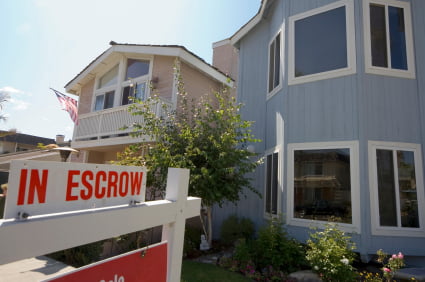Nationally, 3.9% of home sales failed to close in 2016, compared to 2.1% in 2015, according to Trulia. Homes which changed status from pending or active contingent back to for sale were classified as failing to close.
California had four of the top ten metros where home sales were most likely to fail in 2016, with:
- 11.6% of sales failing to close in Ventura;
- 10.3% of sales failing to close in Los Angeles;
- 9.7% of sales failing to close in San Jose; and
- 9.6% of sales failing to close in Orange County.
The increase in failed listings was partly due to the sudden spike in interest rates in Q4 2016, which caused homebuyers who did not lock in their interest rate to see their purchasing power reduced mid-sale. A significant 4.3% of homes failed to close in Q4 2016, up from 1.4% in Q4 2015.
But Trulia also attributes the increase to the large number of first-time homebuyers that hit the market in 2016.
As evidence, the percentage of starter homes failing to close nationwide rose considerably to 7.1% in Q4 2016 from 2.4% at the end of 2014.
Here in California, the share of starter homes — homes for sale in the low-tier price range — failing to close in 2016 was well above the national average in most metros, at:
- 13.7% in Ventura;
- 12.4% in Orange County;
- 12.2% in Los Angeles;
- 12.0% in San Jose;
- 9.6% in Oakland; and
- 9.3% in Riverside-San Bernardino.
A smaller number of California metros had a below average rate of starter home sales failing to close, at:
- 6.5% in San Francisco;
- 3.6% in Bakersfield; and
- 2.6% in San Diego.
First-time homebuyers complicate the deal
An increase in first-time homebuyers is mostly good news, and evidence our housing market is improving. More first-time homebuyers means our economy is finally healed and expanding following the 2008 recession which delayed homeownership for most young adults.
However, first-time homebuyers usually bring some extra baggage with them compared to seasoned homeowners, including:
- shorter credit histories;
- smaller down payments;
- a greater reliance on Federal Housing Administration (FHA)-insured financing; and
- a lack of knowledge about the homebuying process.
First-time homebuyers are also buying mostly starter homes. These properties are priced in the low tier. In 2016 and 2017, low-tier properties are the hardest to come by, as inventory is tight and prices are rising more quickly in this tier than other tiers that aren’t experiencing an inventory shortage.
Related article:
What can real estate agents who represent first-time homebuyers do to ensure the sale goes through?
Agents know that first-time homebuyers require extra attention, and generally more work. Since the process is new to them, they will have more questions. Other aspects of the sale you’ll need to be proactive about include:
- making sure they are pre-qualified with at least three mortgage lenders to ensure they receive the best rate and terms;
- informing them about how much cash they’ll need on hand to cover closing costs, taxes and other unexpected expenses; and
- letting them know in advance about aspects of the transaction they will need to be aware of, like the home inspection, choosing homeowners’ insurance and places where the transaction may be held up along the way.
Interested in an informational pamphlet designed for this particular clientele? Keep an eye out for first tuesday’s First-time Homebuyer Kit, coming in Spring 2017.
Related article:














